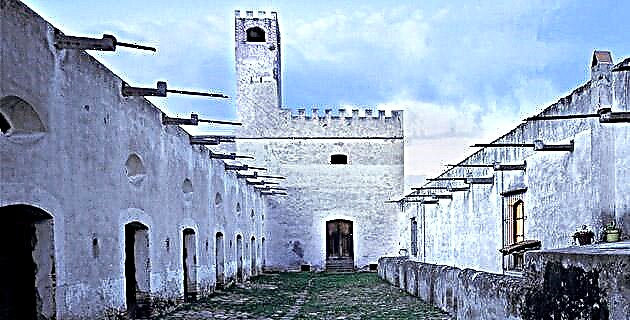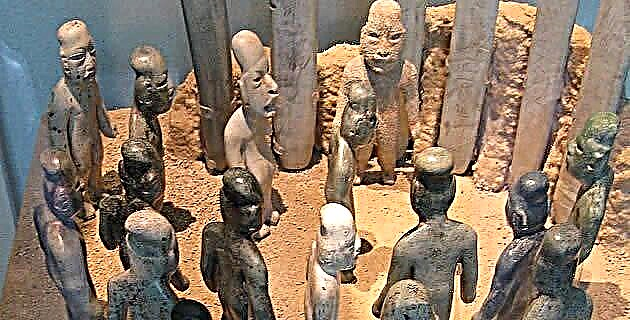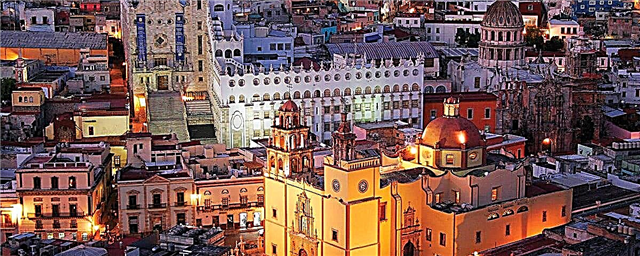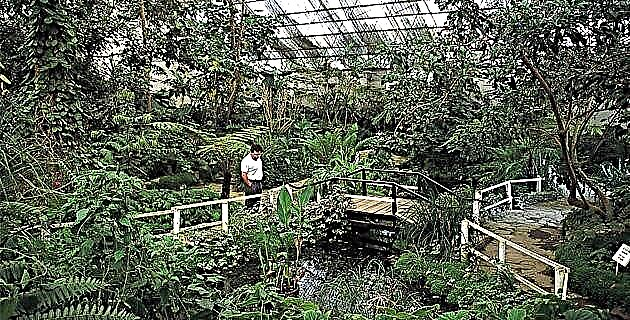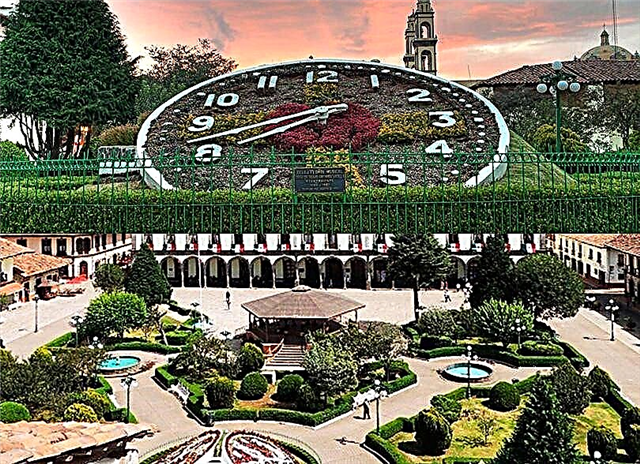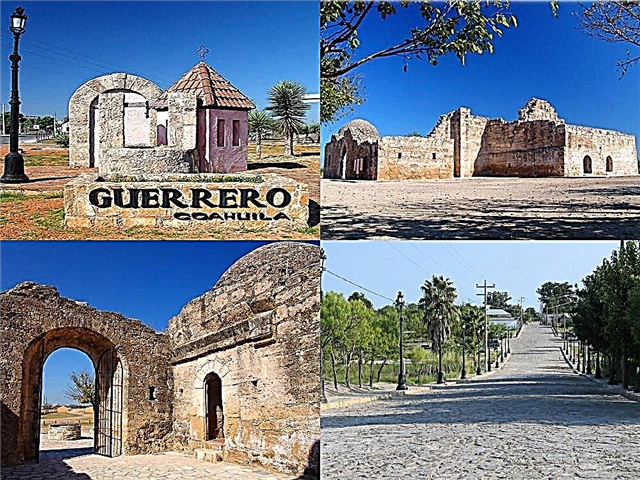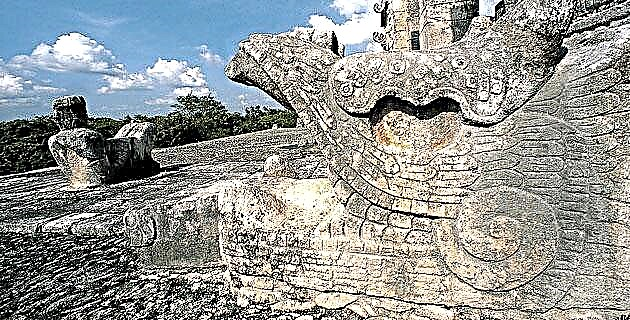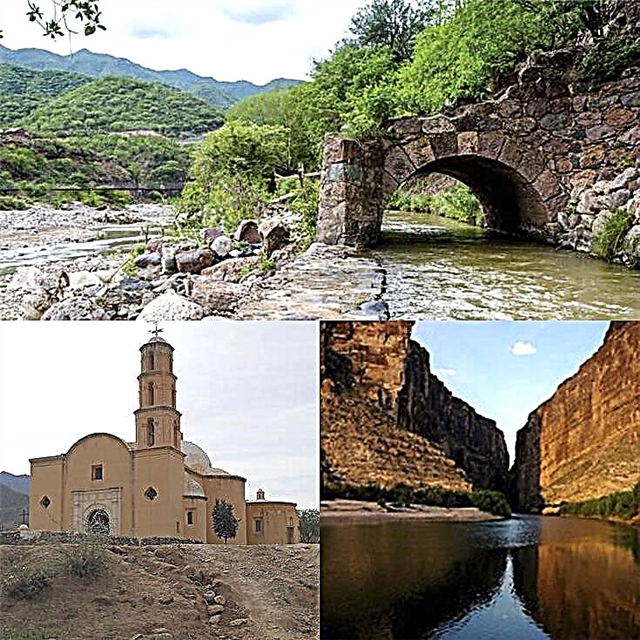He Magic Town Chihuahuan from Batopilas, hidden in the depths of the Copper Canyon, preserves for you the vestiges of its past mining splendor and the most extensive and wonderful places of the Sierra Tarahumara. With this guide you will be able to fully know the town and its spectacular surroundings.
1. Where is Batopilas?
Batopilas is the head of the municipality of the same name, in the southwest of the state of Chihuahua. It is a small town nestled in a deep ravine of the Sierra Madre Occidental that received the name of Pueblo Mágico in 2012 for its mining past, its colonial attractions and the vast and beautiful places to practice ecological and adventure tourism.
2. How did the town originate?
Batopilas was born when Spanish explorers discovered a rich silver mine at the beginning of the 18th century. The founder of the town was the Spanish miner José de la Cruz, who began the exploitation of a valuable deposit of the precious metal in 1708. The wealth of the seams was so great that the news spread quickly and the development of mining was rapid.
3. How was the time of splendor?
In the middle of the eighteenth century the first stream of entrepreneurs and adventurers began to arrive in Batopilas, each trying to take advantage of the copious veins of silver that promised quick and easy wealth. Great mining entrepreneurs, such as the Englishman Alexander Robert Shepherd, arrived in the 19th century and built a second mansion in Batopilas. The town was built according to the architectural style of the time and the mining boom lasted until the beginning of the 20th century when the town, which had 10,000 inhabitants, began to decline.
4. What was left in Batopilas of the mining boom?
With mining wealth exhausted, Batopilas began to languish and almost the entire 20th century was a period of impoverishment, which reduced its population to a few hundred inhabitants. As witnesses to the splendor already gone, the abandoned mines, the town of cobbled streets and beautiful abandoned houses and the immense landscapes, beautiful but full of silence and desolation, remained. Little by little the town was consolidated as a tourist destination, it was recovering its infrastructure and in 2012 it received the government's support for its incorporation into the Magic Towns system.
5. How is the weather in Batopilas?
The area in which Batopilas is found, full of ravines, offers an extreme climate, with cold in the highest places and heat in the depths. The average annual temperature in the town is 17 ° C, but it is a misleading temperature because it comes out of averaging the strong cold in winter and the heat, always above 30 °, in summer. It rains less than 800mm a year.
6. What is the best way to get to Batopilas?
Getting to Batopilas is an adventure, which is the kind of trip that ecotourism enthusiasts love. Those who come from far away must take a plane to the city of Chihuahua and from there continue by road. The distance between Mexico City and Chihuahua is almost 1,500 kilometers, a tough 17-hour overland journey. Most of the people who go to Batopilas make the trip from Creel, located 137 km away, an important station that is on the way to the Copper Canyon, where the Magic Town is.
7. What are the main attractions of Batopilas?
The first great attraction of Batopilas is to make the trip there. On the way, you can admire amazing landscapes of the Sierra Tarahumara and cross vertigo suspension bridges. When the descent ends and you arrive at the town, you are enchanted with its traditional streets and its colonial buildings with their old recovered splendor. In the small historic center of Batopilas there are two different eras, the Porfiriato, when the town reached its peak of prosperity and the previous one.
8. What stands out from the period before the Porfiriato?
One of the oldest mansions in Batopilas is the Barffuson House, a construction that was the residence of the Marquis of Bustamante, commissioner of the royal house of Spain in the territory. Other attractive buildings from the 18th century are the church of the Virgen del Carmen, the Casa Cural and the large house where the Sor Juana Inés de la Cruz School currently operates. The Casa Bigleer stands out from the 19th century, which has the furniture installed in the 1870s.
9. What are the most outstanding architectural attractions of the Porfiriato era?
One of the most enjoyable activities in Batopilas is walking through the streets and talking with the peaceful residents about the splendor of the town in the mining era. Batopilas reached its peak during the Porfiriato and from this period date the Municipal Palace and the Hacienda San Miguel with the enormous mansion that was the residence of the Silver Magnate, Alexander Robert Shepherd. Likewise, the birthplace of the founder of the PAN party, Manuel López Morín and the Riverside Lodge hotel stand out.
10. What are the main natural attractions?
The immensity and beauty of the Batopilas landscapes can be appreciated from some viewpoints that are on the way down to the town. The La Bufa viewpoint, near the mine of the same name, which was the richest in the region, is located 1,300 meters above the bottom of the abyss. From there you can admire the town, the Batopilas River and the spectacular surrounding landscape. Another viewpoint with spectacular views is Piedra Redonda, from which you can see the Barranca de los Plátanos and the community of Cerro Colorado.
11. Are there water attractions?
Along the Batopilas River there are ideal spaces for camping and taking a dip to appease the strong summer heat in the area. The main waterfalls are in the San Fernando stream, near Piedra Redonda. The stream continues its course through the steep Barranca de los Plátanos, forming beautiful waterfalls, one of which is about 100 meters high.
12. Is it true that Batopilas was the first Mexican town with electricity?
It was not the first, an honor that corresponded to the capital of the country, but it was the second. The wealthy tycoon Alexander Robert Shepherd provided the town with electricity in 1873, for which he ordered the construction of a stone canal and other necessary infrastructure. This canal is another of the constructions that you can admire in Batopilas.
13. Can I visit a mine?
In La Bufa and in Batopilas there are several abandoned mines that can be explored on a guided walk so as not to run security risks. 8 km from Batopilas there are several vestiges of the mining exploitation in what was the Cerro Colorado mining site. Here you can see some old works that constitute abandoned witnesses of the mining wealth, such as tunnels, bridges, bakeries and canals.
14. What other attractions are there near Batopilas?
In the indigenous community of Samachique is the mission and the church of Nuestra Señora de los Dolores de Samachique, which dates from the mid-18th century. If you are comfortable walking, you can go on foot to see the mission of Nuestra Señora de Loreto de Yoquivo, also an attractive building from the 18th century. Another nearby Jesuit mission is that of El Santo Ángel Custodio de Satevo.
15. Can I practice adventure sports?
Batopilas is ideal for walking and mountain biking. The walks are particularly necessary because many places of interest can only be reached nearby on foot or on horseback. The walking routes along the banks of the Batopilas River and streams take you through small communities, mining sites, missions, and magnificent areas for camping and bathing. One of these routes on the old road from Batopilas to Urique, which takes two days and is advisable to do with a guide.
16. Are there crafts of interest?
The main artisan tradition in the area is practiced by the Tarahumara Indians, ancestral inhabitants of the Copper Canyon and quiet witnesses of the cycle of prosperity, decline and recovery of Batopilas and other mining communities. Skilled Tarahumara artisans make musical instruments such as drums, use the earth with traces of silver to make ceramics, and use the surrounding materials to make bows and other pieces.
17. Where do I stay in Batopilas?
In the town there are not many hotels and the existing ones are simple accommodations, suitable for adventurous tourists, who do not think about the comforts of the city. On the main street of Batopilas is the Copper Canyon Riverside Lodge in an attractive building from the Porfirian period. This boutique hotel is the most beautiful in town and its attention is careful. The Hotel Hacienda del Rio is located on the route between Samachique and Batopilas, and has a shuttle service to the town. Other options are the Cerocahui Wilderness Lodge, on the road to Urique; and the Hotel Misión and the Hotel Paraíso del Oso, both near Cerocahui.
18. What can you tell me about Creel?
It is an obligatory step towards the Copper Canyon and many people go with packages that include several nights in Creel and some in Batopilas. Creel has a provision of services much greater than that of Batopilas and in its vicinity there are attractions that are worth visiting. At 5 K. from Creel is Lake Arareko, with spectacular rock formations in the surroundings. Near Creel are also the beautiful Cusárare Waterfall, 25 meters high. At 110 km is the Basaseachi Waterfall, almost 250 meters high.
We hope that this guide to getting to know the charming Batopilas will be useful for your visit to the Magical Town of Chihuahuan. See you soon!

